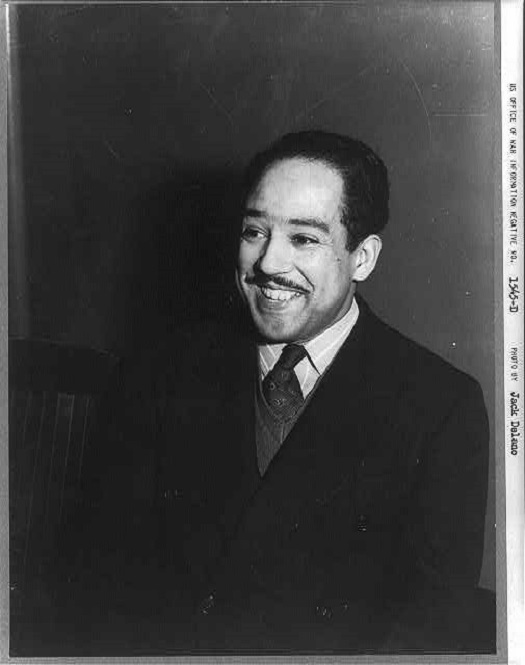Poet and writer Langston Hughes, famous for his elucidations of black American life in his poems, stories, autobiographies, and histories, was born in Joplin, Missouri, on February 1, 1901 or 1902.

I’ve known rivers:
I’ve known rivers ancient as the world and older than the flow of human blood in human veins.
My soul has grown deep like the rivers.Langston Hughes, “The Negro Speaks of RiversExternal.”
Hughes’ parents separated shortly after he was born, and he spent much of his childhood in the company of his grandmother in Lawrence, Kansas. She filled his imagination with stories, such as the tale of her first husband Sheridan Leary, a freedman who went to Harper’s Ferry in 1859 to fight alongside abolitionist John Brown.

Hughes’s poem “The Negro Speaks of Rivers,” written the summer after he graduated from high school in Cleveland, Ohio, was published in Crisis, the magazine of the NAACP, in 1921. After attending Columbia University for a brief time, Hughes spent several years working odd jobs and traveling abroad. His reputation received a boost in 1925 when Hughes, who was working as a busboy at the Wardman Hotel in Washington, D.C., slipped three poems into the satchel of guest Vachel Lindsay who was famous for his public readings or performances of poetry. Lindsay’s enthusiastic rendition of and response to Hughes’s hastily written poems led to a scholarship at Lincoln University in Pennsylvania. By 1930, Hughes had earned his degree from Lincoln and published two collections of poetry and one work of prose.

Hughes is closely associated with the Harlem Renaissance or New Negro Movement, a flourishing of artistic expression that emerged from the community of Harlem in New York City in the 1920s. Critic Carl Van Vechten recognized early the fresh approach of the writers of the Harlem Renaissance and the importance of the addition of African-American voices to literature. The Van Vechten Collection includes portraits of many of Hughes’s contemporaries in the movement, such as Countee Cullen, Arna Bontemps, author of Drums at Dusk, and writer and folklorist Zora Neale Hurston.
In his 1941 poem, “The Ballad of Booker T.”, featured above, Hughes writes sympathetically of educator Booker T. Washington, whose reputation remains a subject of controversy and debate.
In collaboration with Kurt Weill and Elmer Rice, Hughes also created the opera Street Scene. Originally developed by Rice as a play, the Pulitzer Prize-winning Street Scene was first performed in 1929. Based on a libretto by Rice, the operatic version of Street Scene opened on Broadway in 1947, with music by Weill and lyrics by Hughes.
Langston Hughes died in 1967. Among his most well known works are The Weary Blues, a 1926 collection of poetry; The Ways of White Folks, a 1934 collection of short stories; The Big Sea, an autobiography of his early life, published in 1940; and the 1956 A Pictorial History of the Negro in America.
Learn More
- Learn more about the experience of African-Americans in Hughes’s childhood home of Kansas in the feature on Nicodemus, Kansas, part of The African-American Mosaic: A Library of Congress Resource Guide for the Study of Black History & Culture.
- See The Harlem Renaissance and the Flower of Creativity, part of the online exhibition The African American Odyssey: A Quest for Full Citizenship, to learn about other creative artists and writers of the period.
- Search on the term Elmer Rice in Posters: WPA Posters to see posters advertising plays by Rice. See, for example, a poster for a 1938 production of “Counsellor at Law.” To learn more about Rice’s involvement with the Federal Theatre Project read “Federal Theatre: Melodrama, Social Protest, and Genius.”
- The collections of the Library’s Manuscript Division represent all areas of American studies. The letters and drafts of several American poets and writers, including Walt Whitman, Ralph Waldo Emerson, and Langston Hughes are among those showcased online. Items from collections that examine African-American culture and history are also featured online.
- Learn about Hughes’ interest in folklore, documenting black vernacular culture and collecting songs. From the American Folklife Center blog Folklife Today read Langston Hughes: Experimental Folklorist and listen to the podcast Hidden Folklorists: Langston Hughes.
- Search the archives of the Poetry & Literature Center at the Library of Congress blog “From the Catbird Seat,” to find numerous postings related to Langston Hughes.
- In honor of Langston Hughes’s 110th birthday in February 2012, the Library of Congress hosted a Literary Birthday Celebration. View the webcast to share in the activities.